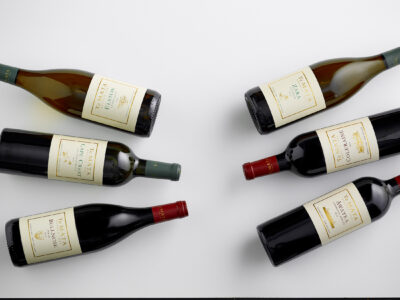An historically early vintage that was warm and dry produced low crops with tiny berries, creating exceptional wines with fragrance, tension, purity, power, and persistence… these are so appealing, the tricky part will be having the patience to enjoy them at their peak!
Winter – Spring
Winter was the warmest on record in New Zealand, and very dry. This led to the earliest budburst in
Te Mata’s history. Thankfully, we received a large volume of rain in the early part of spring that gave
us the ability to recharge our soils and grow a healthy, full canopy. From there on, we received very
little in terms of significant rain events and, soon after flowering, we began to see blocks experience
mild levels of water stress. Following recent drought years, we knew to start increasing irrigation to
allow the vines to combat heat spikes in late December and January.
Summer – Autumn
December to early February saw average heat accumulation with slightly below average
temperatures. There was very little rain over these months, giving clean canopies, clean fruit,
controlled vine stress, and very small berries on both whites and reds. These factors built on the
early budburst to produce an early harvest with good sugars and acids.
Harvest
Harvesting continued with classical daytime temperatures in very dry conditions, combining with
tiny berries to produce significantly lower yields, both in cropping rates and juice. As a result, the
whites showed great intensity and tension, with wonderful natural acidity, and the reds are deeply
coloured with plenty of extract and purity.
Conclusions – Notes of significance
• A very dry preceding winter
• The earliest budburst in Te Mata’s history
• Early onset of vine stress
• Above average heat summation (GDD Growing Degree Days)
• A tapering of GDD over late January early February led to retention of acids, contributing
to the wines’ varietal expression, balance and wonderful length
• Exceptionally clean fruit with no disease pressure
• The earliest ever start to harvest at Te Mata Estate
• Very low crops with tiny berries and great concentration
• White wines – acid retention, pure with intense complexity
• Red wines – deeply coloured, complex and structured
Download the Technical Report from Te Mata’s Senior Winemaker Phil Brodie here…





